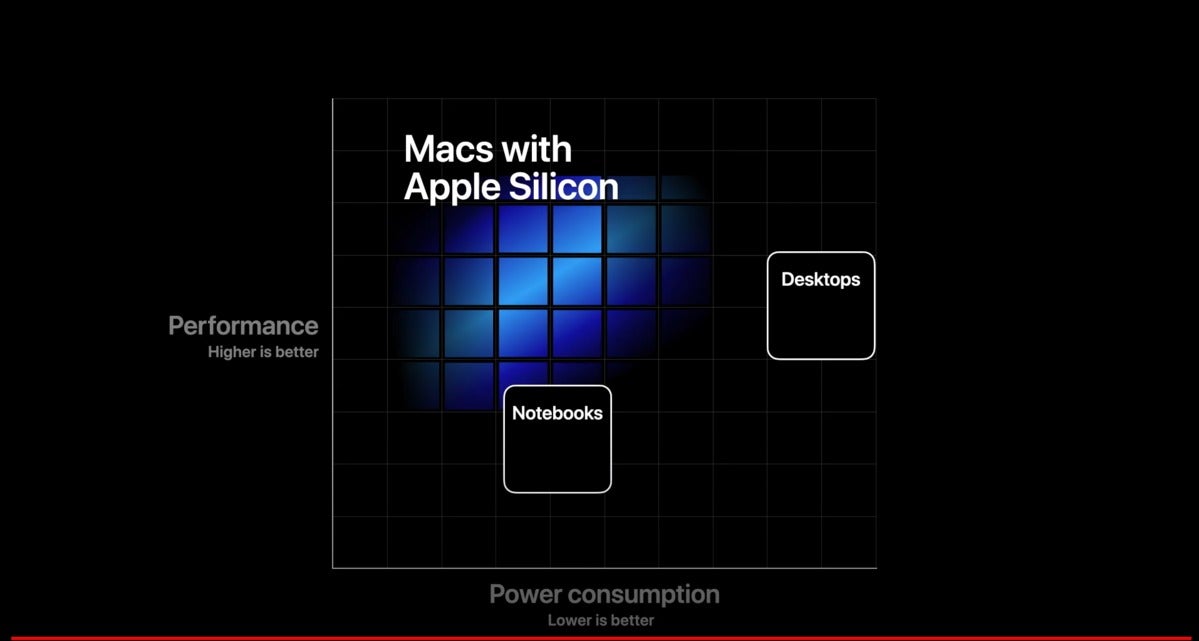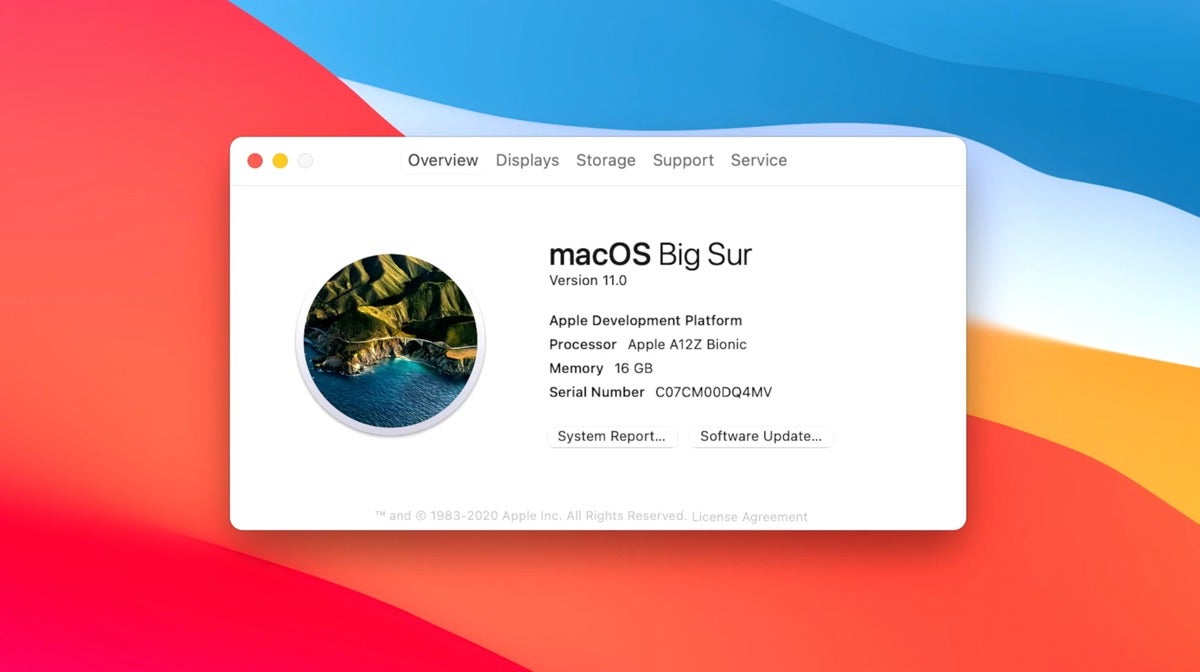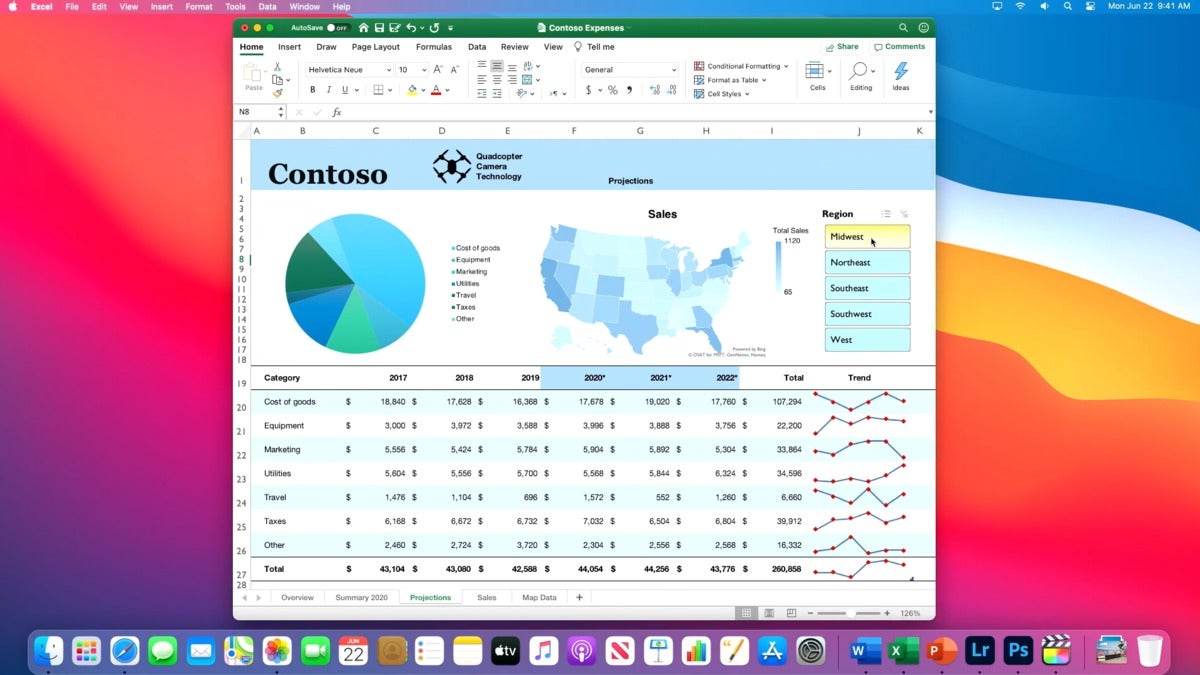
[ad_1]
Apple finally dropped its long-awaited bombshell: Apple’s Macs are switching to its own internally-developed ARM silicon, and the transition will begin before the end of the year.
Apple made the announcement on Monday, as an unofficial “one more thing” at the end of the opening keynote of the company’s Worldwide Developer Conference (taking place virtually because of the coronavirus pandemic). The custom silicon will be supported by the next iteration of Apple’s MacOS, code-named “Big Sur.”
Apple CEO Tim Cook described the transition as a “game-changer” for Apple, similar to the company’s prior transition away from the PowerPC to Intel’s own Core processors. The transition to ARM-based Macs from the older Intel-based Macs will take place over a period of about two years, Cook said, adding that Apple still has new Intel-based Macs in the pipeline.
 Apple
AppleHere’s how Apple sees its new ARM chips.
Apple has maintained for some time that its iPad Pro is actually faster than the majority of PC laptops. Apple executives reiterated that claim in the WWDC presentation. Johny Srouji, senior vice president of hardware technologies at Apple, said that Apple has already shipped 2 billion of its own “most optimized, highest performance chips” as part of the iPhone and iPad.
Apple’s ARM-powered processor for the iPad is known as the A12Z Bionic. Apple showed off a Mac powered by the same chip, with 16GB of memory behind it.
 Apple
AppleApple’s demonstration machine running the new “Big Sur” Mac OS on top of the A12Z.
Apple plans to do the same for the Mac—and, because the chips were originally designed for the iPad and iPhone, they’ll be able to run apps written for iOS as well. In fact, it appears that Apple is making its claim based on the tight integration of MacOS and the silicon, allowing each to take advantage of capabilities designed for the others, such as a secure enclave being built into the new Mac silicon, and a neural engine that will help speed up machine learning.
On Windows, apps written for ARM processors manufactured by Qualcomm have struggled with a fundamental limitation: Unless the code is written natively for ARM, the apps have to be emulated. Even so, ARM processors won’t run 64-bit apps written natively for X86. Though more apps are being written for ARM, the Windows-on-ARM ecosystem has been hampered by the lack of developer support. That could change, on both platforms, as Apple’s commitments spurs developer interest.
 Apple
AppleApple showed off Excel running on the new ARM A12Z Bionic…
Apple will ship a version of Rosetta, called Rosetta 2, that will step in and translate code written for X86 to the new ARM instructions, on the fly. That will provide a stopgap until new developer apps are written for the ARM platform.
 Apple
Apple…as well as Shadow of the Tomb Raider.
Because of Microsoft’s early commitment, Apple was able to show off Word, Excel and PowerPoint running natively on the new platform. Craig Federighi, Apple’s senior vice president of software engineering, showed off games like Shadow of the Tomb Raider as well, with lighting effects.
Srouji had previously claimed that the GPU in the new Macs would be orders of magnitude better than in previous generations. Adobe’s Creative Cloud apps, including Lightroom and Photoshop, were demonstrated on the new platform. Apple also showed a Linux virtual machine via Parallels.
Apple unveiled a Quick Start program to help developers transition to the new platform. The Developer Transition Kit, which will ship soon, will include a Mac Mini with the new A12Z SoC inside, plus 16GB of memory and a 512GB SSD.
 Apple
Apple
[ad_2]
Source link